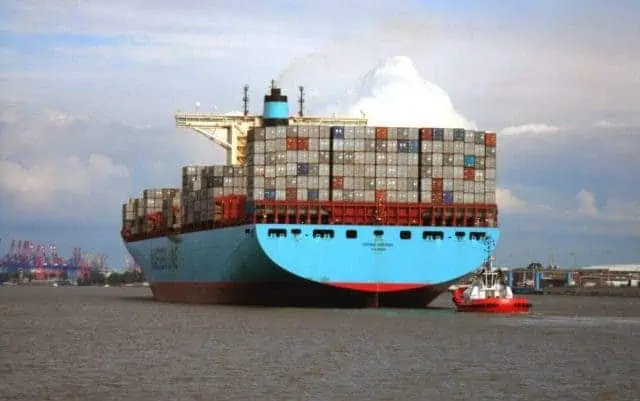Deep within the colossal vessels traversing our oceans lies a marvel of engineering: the Wärtsilä RT-flex96C. This engine, crafted by the Finnish company Wärtsilä, is the largest and most potent diesel engine globally. But its significance extends far beyond its size; it embodies efficiency, sustainability, and unrivaled capability.
Birth of a Giant:
In 2005, Wärtsilä set out to create a diesel engine. The result? The formidable RT-flex96C is a masterpiece of engineering equipped with advanced common rail fuel injection technology to enhance efficiency and reduce emissions.

Unveiling the Powerhouse:
With an awe-inspiring output of 107,389 horsepower and a staggering torque exceeding 7,000,000 Newton meters, the RT-flex96C commands attention. This engine is a true titan, standing 44 feet tall and stretching 90 feet long. Despite its immense power, it operates efficiently, consuming a mere 6.5 ounces of diesel per cycle, thanks to its advanced technology.

But the magnificence of the RT-flex96C doesn’t stop there. Weighing in at a staggering 2,300 tons and towering 44 feet tall, with a length spanning 90 feet — surpassing the height of a four-story building — this engine is a true colossus among its peers. Despite its gargantuan proportions, it operates with remarkable precision, with a redline set at 102 RPM, yet possessing enough torque to overpower even the most formidable adversaries.
Key Specifications:
- Engine Type: Diesel, common-rail, turbo
- Dimensions: 13.5 meters tall, 26.59 meters long
- Weight: 2300 tons
- Number of Cylinders: 14 inline
- Cubic Capacity: 25,480 liters
- Rotation per Minute: 22 – 102 RPM
- Maximum Power: 108,920 horsepower (80080 kW)
- Maximum Torque: 7,603,850 Nm at 102 RPM
- Fuel: Heavy Fuel Oil (HFO)
- Consumption: 171 grams per kWh

Turbocharged Performance
Each of the 14 cylinders within the Wärtsilä RT-flex96C engine voraciously consumes 6.5 ounces of diesel in a single cycle, churning out 5700 kW of energy. While this may seem like an extravagant appetite, it’s important to note that this engine is remarkably efficient and among the least polluting in its class. Thanks to innovative features like common rail fuel injection and other cutting-edge technologies, emissions are minimized, and fuel economy is maximized.

But what exactly demands such immense power? Enter the Emma Mærsk, the cargo ship that became the inaugural vessel to harness the might of the RT-flex96C engine in 2006. With a capacity to carry a staggering 11,000 20-foot shipping containers, this maritime behemoth is no ordinary vessel. Cruising at a breakneck speed of 31 knots, significantly faster than its counterparts averaging 20 knots, the Emma Mærsk epitomizes efficiency and speed in maritime transport.
Thanks to the unparalleled power output of the RT-flex96C engine, vessels equipped with this engineering marvel can achieve remarkable average speeds, slash transit times, and increase the frequency of voyages throughout the year. Take, for instance, the regular cargo ferrying between China and the U.S. With the RT-flex96C at its helm; the Emma Mærsk can deliver its cargo a staggering four days ahead of its competitors, resulting in substantial cost savings for shipping companies.

As a testament to its prowess, 25 of these formidable engines are prowling the world’s oceans, with another 86 slated for deployment. With each vessel propelled by the RT-flex96C, maritime transport is propelled into a new era of efficiency and reliability, reshaping global logistics and commerce.
Navigating New Horizons:
Since its debut aboard the Emma Mærsk in 2006, the RT-flex96C has revolutionized maritime propulsion. Powering cargo ships carrying 11,000 containers, it propels these vessels at 31 knots, significantly faster than its counterparts. This speed advantage translates to savings in both time and cost, making it a preferred choice for shipping companies.

Wärtsilä continues to innovate, refining the RT-flex96C to meet evolving needs. Recent upgrades include integrating a selective catalytic reduction (SCR) system, reducing nitrogen oxide emissions by up to 95%. Additionally, advanced control systems optimize fuel consumption and emissions, ensuring sustainability without compromising performance.
In conclusion, the Wärtsilä RT-flex96C symbolizes human achievement in engineering and environmental stewardship. Its power and efficiency redefine maritime propulsion, driving vessels toward a greener, more efficient future.









